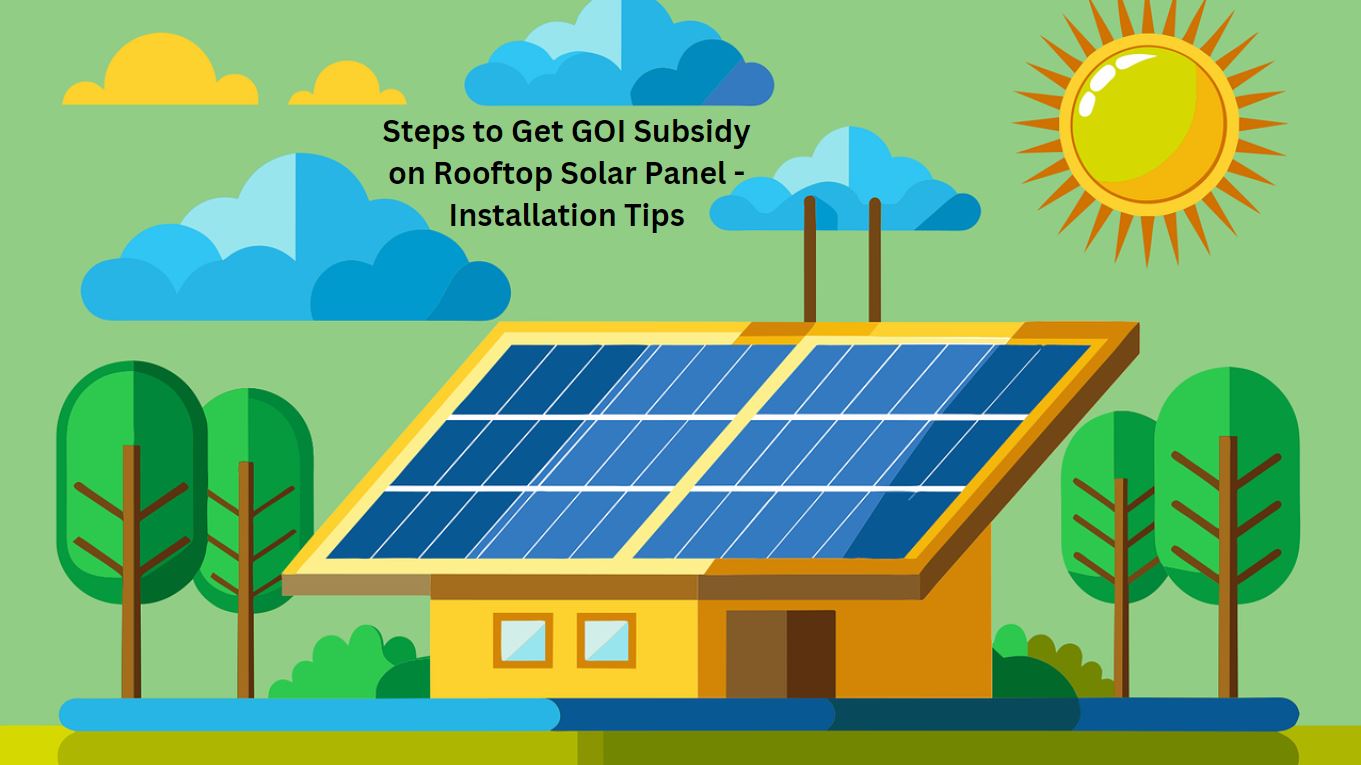Table of Contents
ToggleRooftop Solar Panels
Introduction to Rooftop Solar Panels
Rooftop solar panels are an innovative way to harness the sun’s energy and convert it into usable electricity for your home or business. By installing these panels on your roof, you can take advantage of one of the most abundant and renewable energy sources available. Solar panels, also known as photovoltaic (PV) panels, capture sunlight and transform it into electrical power through a process known as the photovoltaic effect. This introduction aims to shed light on how these systems work and why they are becoming increasingly popular among homeowners and businesses alike.

Benefits of Installing Rooftop Solar Panels
The benefits of installing rooftop solar panels are numerous and compelling. Firstly, they can significantly reduce your electricity bills by generating free power from the sun. This not only leads to savings but also provides protection against rising energy costs. Additionally, solar panels contribute to environmental sustainability by reducing reliance on fossil fuels and lowering greenhouse gas emissions. Many homeowners also appreciate the increased property value that comes with solar installations. Furthermore, solar panels offer energy independence, allowing you to generate your own power and reduce dependence on the grid.
How Rooftop Solar Panels Work
Rooftop solar panels work through a straightforward process. Each panel consists of many solar cells made from semiconductor materials, typically silicon. When sunlight hits these cells, it excites electrons, creating an electric current. This direct current (DC) is then converted into alternating current (AC) by an inverter, making it usable for your home’s electrical system. Excess energy generated during the day can be stored in batteries or fed back into the grid, depending on your setup. The entire system operates quietly and efficiently, transforming sunlight into clean, renewable energy.

Choosing the Right Rooftop Solar Panel System
Selecting the right rooftop solar panel system involves considering several factors. First, assess your energy needs and roof space to determine the appropriate system size. Different types of panels, such as monocrystalline, polycrystalline, and thin-film, offer various efficiencies and costs. It’s also crucial to choose a reputable installer who can provide a high-quality system and reliable service. Additionally, check for warranties and performance guarantees to ensure long-term satisfaction. A well-chosen system will not only meet your energy needs but also offer the best return on investment.
Installation Process for Rooftop Solar Panels
The installation process for rooftop solar panels typically involves several key steps. Initially, a site assessment is conducted to evaluate your roof’s suitability and design the system layout. Once approved, the installation team will mount the solar panels onto your roof using racks and brackets. Electrical wiring is then connected to the inverter and your home’s electrical system. After installation, the system undergoes rigorous testing to ensure proper operation. Finally, you’ll need to have the system inspected and approved by local authorities or utilities before it can start generating power.

Maintenance and Care for Rooftop Solar Panels
Maintaining and caring for rooftop solar panels is relatively simple. Regular cleaning is essential to remove dust, leaves, and other debris that can obstruct sunlight. Most panels are designed to be low-maintenance, but it’s important to inspect them periodically for any signs of damage or wear. Additionally, monitoring the system’s performance can help you spot potential issues early. If you notice any significant drops in energy production or other problems, contacting a professional for maintenance or repairs will help ensure your system remains efficient and effective.
Cost and Financing Options for Rooftop Solar Panels
The cost of installing rooftop solar panels can vary widely based on factors like system size, panel type, and installation complexity. While the upfront investment might seem substantial, various financing options can make solar energy more accessible. Many homeowners opt for solar loans, leases, or power purchase agreements (PPAs), which can spread the cost over time. Additionally, government incentives and rebates can significantly reduce the initial expense. It’s important to explore all available options to find a financing plan that fits your budget and maximizes your return on investment.

Government Policies and Incentives for Rooftop Solar Panels
Government policies and incentives play a crucial role in promoting the adoption of rooftop solar panels. Many countries offer tax credits, rebates, and grants to offset the cost of installation. In addition, net metering policies allow you to earn credits for excess energy generated by your solar system. These incentives can make solar energy more affordable and encourage widespread adoption. It’s advisable to research local and national programs to understand the benefits available in your area and how they can help reduce your overall investment.
Case Studies and Success Stories
Examining case studies and success stories can provide valuable insights into the real-world benefits of rooftop solar panels. For instance, many homeowners have reported significant reductions in their energy bills and increased property values after installing solar systems. Success stories from businesses highlight not only cost savings but also positive environmental impacts. By showcasing these examples, potential solar adopters can gain a better understanding of how rooftop solar panels can benefit them and be inspired by others who have made the switch to renewable energy.
Future Trends in Rooftop Solar Technology
The future of rooftop solar technology is promising and full of innovation. Advances in solar panel efficiency, energy storage solutions, and smart grid integration are driving the evolution of solar energy systems. Emerging technologies, such as building-integrated photovoltaics (BIPV) and solar shingles, are making solar panels more versatile and aesthetically pleasing. Additionally, improvements in data analytics and monitoring will enhance system performance and maintenance. As these trends continue to develop, rooftop solar panels will become even more efficient, affordable, and accessible, further accelerating the transition to renewable energy.
